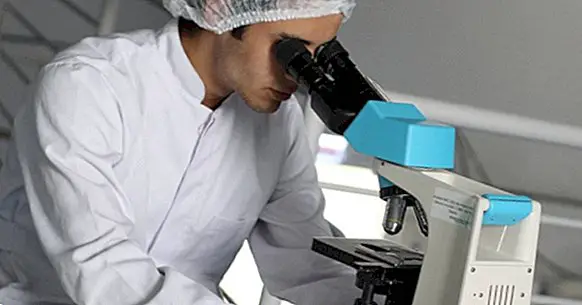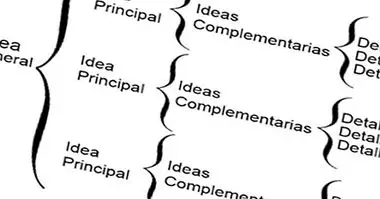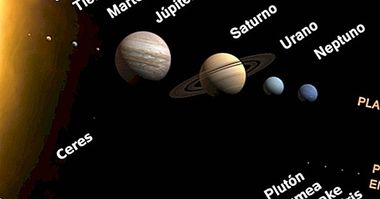The 8 steps of the scientific method
Imagine that we see an apple fall from a tree, and the next day we see someone stumble and fall, and the next as a child shoots a ball that ends, inevitably, also on the ground. Maybe it suddenly occurs to us that maybe there is some kind of force that pulls and attracts the bodies towards the ground and that this can explain why the different masses tend to be in contact with the surface and have a certain weight.
While we are implying the existence of the force of gravity, we can not consider such thoughts as mere scientists. It will be necessary to perform a series of scientifically valid procedures in order to be able to propose its existence as a theory: we will need to use the scientific method. And this method requires a series of steps to be able to elaborate knowledge.
In this article we will see what are the different steps of the scientific method , in order to see how scientific knowledge and different theories have had to go through a series of basic procedures to be considered as such.
- Related article: "The 15 types of research (and features)"
The scientific method: general concept
Before entering to talk about the steps that comprise, first of all It is necessary to establish briefly what is the scientific method . It is understood as such the set of methodologies and steps by which science seeks knowledge and the formulation of hypotheses that contrast experimentally.
This method is a theoretical process that is applied in a systematic way with a certain order in order to generate valid and objective knowledge, based on empirical observation and the search for those knowledge that can be refuted or falsified and that are replicable if They meet the same conditions.
The methodology used in the scientific method can be variable, although The hypothetico-deductive procedure is usually employed . This method has the advantage that as progress is made in knowledge, it is corrected in such a way that hypotheses and beliefs that are not validated are rejected, using the logic and objectivity of experimentation and replication.
Through this process, what we seem to observe initially will give rise to a series of hypotheses that through research, observation and experimentation will be contrasted, generating an increasingly contrasted knowledge through the controlled replication of events , something that little by little will be producing theories and, in the long run and if our hypothesis is maintained in all known conditions in a universal way, laws.
Therefore, the scientific method must be the basis for any research that wants to be called scientific, since it allows us to obtain a relatively objective knowledge of reality, serving to answer numerous questions about it and the phenomena that occur in it, generating theories and laws on the matter and being able to advance them both at the level of knowledge and at the level of the practical application of the obtained.
The steps of the scientific method
As we have said, the scientific method is the main procedure that serves as the basis for the construction of scientific knowledge based on evidence, assuming its application the follow-up of a series of steps that allow advance in the understanding of the phenomena . The steps that the scientific method follows are the following.
1. Definition of the problem or question to investigate
The first step of the scientific method is, logically, the establishment of a problem or question to analyze. It may be a phenomenon that we have observed and that we intend to obtain knowledge, or the perception that there may be a relationship with other phenomena.
But it does not need to be based on direct observation , but can also be based on a question that arises spontaneously or the attempt to see if a belief is founded.
2. Evaluation and review of previous experiments and antecedents
It is possible that the phenomenon that we have observed or the relationship that has seemed viable to us has already been proven previously by other researchers, It is necessary to review the existing scientific literature about the topic.
3. Generation of hypothesis
The observation or the question in question generates a series of impressions in this regard, the researcher elaborating possible solutions to his questions. These possible solutions will be for the moment mere hypotheses, since they are proposed solutions to the original question that have not yet been contrasted.
It is important in this step to generate testable hypotheses , otherwise they could not go beyond being mere beliefs, and as far as possible, operationalized. These hypotheses will allow making predictions about the behavior and interaction of the different variables linked to the original question or problem.
- Maybe you're interested: "Karl Popper's philosophy and psychological theories"
4. Search / design and use of an empirical falsification method
The next step once the hypothesis is obtained is to choose and develop a methodology or experiment that allows systematically and controlled to check if our proposed solution is sustained. For this we have to take into account that the hypothesis must be assessed in a situation as controlled as possible, taking into account the interaction of variables beyond the intended ones.
In general, experimentation is used for this step, since it allows the control of the situation and the variables so that it can be observed if the proposed variables have any relationship . It is important to bear in mind that we will need large samples or the repetition of the experiment in order that the result obtained is not merely coincidental.
It is essential to assess the type of variables that we are going to use when checking our hypothesis, as well as the characteristics of the sample or the stimuli to be used and the control of possible strange variables. It will be necessary to make these variables something operative, defining the values they can have in order to collect them later.
5. Experimentation or testing of the hypothesis
The next step, once designed the experiment or method to be used, is to perform the experiment itself. It is important to collect the data systematically, always in the same way in such a way that there are no divergences that invalidate the possible interpretation of the data.
Likewise the experiment is carried out by manipulating the variables , but without actively favoring the result favoring our hypothesis, otherwise we would be introducing a bias in the subsequent interpretation. In fact, we should aim instead to try to refute our hypothesis instead of confirming it
- Related article: "Types of Hypotheses in scientific research (and examples)"
6. Comprehensive analysis of the results
The experiments carried out will yield a series of results, which should be analyzed in order that later we can assess whether they correspond or not with the hypothesis that we held.
It is important to keep in mind that a single experiment is not enough in a single occasion to be able to determine that a hypothesis is true or not , but must be replicated on numerous occasions or with different subjects.
The possible influence of factors other than those of our hypothesis that could interfere or generate one or other result independently of whether the relationship between variables that we imagined is true or not should also be assessed. All this must be assessed through statistical methodology in order to assess whether our results are reliable and valid.
7. Interpretation
Once the results have been analyzed, it will be necessary to assess what they imply in relation to our hypothesis, based on whether the predictions regarding the behavior of the variables that should have occurred if our hypothesis were correct are met or not. In short, this step aims to give an answer to the question or problem originally raised . If the data corresponds, the experiment will support the hypothesis, and otherwise it will refute it.
Of course, we must bear in mind that we are only facing a positive or negative data of an experiment: it will be necessary to replicate it in order to determine if our hypothesis is met in other experimental conditions or in other experiments.
8. Reformulation or generation of new hypotheses
So if the hypothesis that we held has been empirically verified as if it is not, it can be redefined or if it has been shown to be used as a basis to generate new knowledge and new questions , something that will make us understand more and more in depth the phenomena and problems studied.
Bibliographic references:
- Barboza, M. (2015). Application of the scientific method in the performance of legal medical reports. Legal Medicine of Costa Rica- Virtual Edition, 32 (1). Costa Rica.
- Otzen, T., Manterola, C.m Rodríguez-Núñez, I. & García-Domínguez, M. (2017). The need to apply the scientific method in clinical research. Problems, benefits and feasibility of the development of research protocols. International Journal of Morphology, 35 (3): 1031-1036.
- Quintero, G.A. (1956). Brief history of the scientific method. Department of Fine Arts and publications of the Ministry of Education. Panama.
- Sotelo, N. and Pachamé, J. (2014). Module I: Scientific Method, scientific methodology applied to criminal investigation. National University of La Plata, Argentina.



















